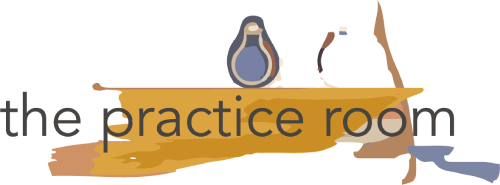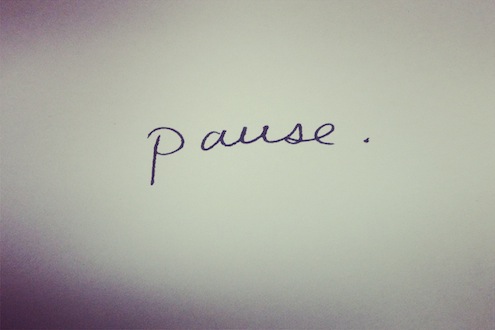[vc_row][vc_column][vc_column_text]
This is an often-quoted, beautiful biblical allegory:
“After the last scene of my life flashed before me,
I looked back at the footprints in the sand.
I noticed that at many times along the path of my life,
especially at the very lowest and saddest times,
there was only one set of footprints.
This really troubled me, so I asked the Lord about it.
“Lord, you said once I decided to follow you,
You’d walk with me all the way.
But I noticed that during the saddest and most troublesome times of my life,
there was only one set of footprints.
I don’t understand why, when I needed You the most, You would leave me.”
He whispered, “My precious child, I love you and will never leave you.
Never, ever, during your trials and testings.
When you saw only one set of footprints,
It was then that I carried you.”
Very early on, i decided to put my faith in the ‘Lord’ of my practice. and over two decades, this has seen me through an eventful and unconventional life – with highs and lows, advancements and setbacks, challenges physical, emotional and mental. Over these two decades, my practice has primarily been asana-based. this is a brief account of my understanding of pranayama over the last couple of years, with some practical pointers about how to establish the pranayama practice:
Even as an enthusiastic and eager student, at least the first ten years of my practice were spent in just trying to understand the fundamentals of the asana practice. Pranayama was introduced in ‘Intermediate’ level classes, in very small doses. During the last week of the month, intermediate and advanced level classes in our tradition are usually done quietly, with a focus on inversions, restorative actions, and the breath. As students we look forward to this last week of the month – because the practice in the rest of the month can get quite rigorous (but we equally look forward to the first, second, and the third weeks of the month!). Pranayama is introduced in these sessions.
Over subsequent years, i have been fortunate to have been introduced to pranayama in longer sessions, and in more detailed programs, and have indeed had brief flashes of the powerful effects that this deeply inward journey engenders.
As a ‘sincere’ student, i understood that sporadic ‘experiences’ in pranayama do not count as a practice. But my efforts at starting a pranayama practice lacked both skill and intensity. They were easily thwarted – by boredom, by lack of ideas, by laziness, or just by wanting to do asanas instead. Like this it went on for years. But, like the person in the story above, when hardest hit, I could not summon my asana practice, and found myself floundering. In the absolute scale of suffering, what I experienced was meagre, but it was enough to completely derail my asana practice. I looked at asana sequences for ‘grief’, and for ‘anxiety’. I trust that they work, i have access to a fully equipped yoga studio, but i was not able to put myself through those sequences. A sense of ‘heaviness’ had settled on my mind and my body. What lifted me and carried me through this period was the ‘breath’.
For several months, i spent a couple of hours every day working with pranayama. Since i could not afford more than two hours towards my personal practice, this meant that for months i sustained only on this pranayama practice. When i didnt sleep well in the night, i dozed off on the mat after only a few minutes of being able to work with the breath (this does not count as pranayama. but it does indicate that the mind was able to momentarily detach itself from worries and to let sleep approach). I repeatedly worked with audio recordings of a few pranayama classes. These hours gave me the strength to continue to teach and present a workable face to the world.
After a few months, i was able to get back to my asana practice. But this time around, I have been able to maintain a separate pranayama practice with some success. These are my learnings:
-
Get into the habit of observing the breath in Asanas.
Asana/ pranayama/ meditative practices form a continuum. Asanic positions are iconographic – they impact the breath (and the mind), not just during the process of staying in the asana, but also leave imprints on the mind and the psyche. Studies of these connections is a fascinating field to explore throughout one’s lifetime of practice. Get into the habit of doing this as early as possible – observe the breath – the inhalations, exhalations, pauses – in the different asanic positions. Watch the reciprocal effects – how the breath changes in the positions, and also how consciously changing the breath changes the position in:
-
Standing positions
-
Balancing positions
-
Lateral extensions
-
Forward extensions
-
Backward extensions
-
Twisting positions
2. Get very familiar with the positions which make breath studies particularly accessible.
While the above studies may be done in all asana positions, simple positions – particularly render themselves to these breath studies. This is just one of the many contributions of Guruji in the field of yoga – to increase its versatility, and accessibility, by demonstrating how pranayama can be practices not just in the classical seated position, but in a vast array of supported positions – supine, seated and inverted.
-
-
-
savasana flat on floor,
-
savasana with spine elevated on bolster/ blankets
-
tieing belts at various leg positions – close to the pelvis, top of thighs, middle of shins – or more than one location
-
use of weights – for thighs, for shoulders, for palms
-
supta baddhakonasana with vertical elevation for the back or with horizontal elevation at the sacral/ lumbar area
-
supta virasana
-
rope sirsasana
-
variations of seated position – on the floor or on chair
-
-
(Watch the video series on postures that lend themselves to breath studies. Links at the end of this blog).
3. Asana as the Foundation
A good foundation, as well as continuing practice, of asana practice is essential for undertaking pranayama. Even from just from a physical and physiological perspective, maintaining a stable, relatively still position for a prolonged period requires control and skill of the body. This is true even in a seemingly simple supine position, but more so in seated pranayama. An untrained body will soon start feeling the strains of holding still in any position. This may manifest as discomfort in back, hips, knees or shoulder. Or it may manifest as agitation, distraction or drowsiness – maintaining the mind in a neutral, non-agonised state, also requires skill that comes through practice. These problems may come sporadically without warning, and one needs to know when to push through, and when to let go.
4. Make time. Create Space.
It is best to keep the practice of asana separate from pranayama. If practicing both asana and pranayama in the same session, it is recommended to do the asana practice first, follow it with a savasana, and then do the pranayama. Very few of us have enough time to set aside for two separate sessions of asana and pranayama, and in the beginning, asana followed by pranayama is the only workable solution. But in my experience, a long and vigourous asana practice does not set a proper base for pranayama. This could be due to either one of two reasons: i) pranayama takes effort. A vigourous asana practice, leaves one physically too tired to make this effort. ii) the actions and effects of pranayama are subtle. Unless an asana practice is done with great sensitivity, one does not have the sensitivity to access actions and effects completely.
5. Pranayama is a process of education.
Like education in every other subject, it requires both skills and techniques.
Skill is developed through exploration, and through practice. Even with the arsenal of a few simple concepts and a few body positions, there is a lot of scope for exploration of the breath. For this one does not need to tread into the treacherous territory of the more advanced/ extreme forms of pranayama (like bhastrika, kapalbhati, etc.) One can stay within the realms of the normal breath, and quite playfully (and with no danger) study the effects of varying:
1. Body positions: Refer #2 above and the video series
2. Breath (inhalation, the brief pause that accompanies inhalation, exhalation, the brief pause that accompanies exhalation) with respect to volume, velocity, graphic modes of breath, on different parts of the body. This particular theme is extensively explored by Prashantji in his classes.
Techniques are learnt. ‘Light on Pranayama’ by B K S Iyengar lists and describes all the basic techniques of pranayama in great detail. And as guruji himself has said, a good book is better than a bad teacher. But if it is difficult to learn asanas by studying books, it is not any easier to study pranayama. The two techniques that are an essential in the toolkit are Uddiyana kriya and Ujjayi. Both are best learnt with detailed instructions.
6. Pranayama needs an optimal mix of effort, enthusiasm and non-attachment.
Mechanically practicing asanas might still have some benefits for the skeleto-muscular system, but in my experience, a half-hearted or half-headed practice of pranayama has minimal benefit. In the beginning it is normal for the mind to drift off from instructions, but an enthusiastic effort is required to bring the attention back. I have found that many pranayamic positions induce sleep if one is sleep deprived or physically tired/ mentally exhausted. Sleep is undoubtedly an extremely important faculty, and if our practice helps us to access it, we should make use of it to rest and recover. However, this does not count as pranayama.
7. Sharpen the faculty of observing and appreciating
Our faculty of doing takes precedence in our asana practice – both ‘willing’ through the faculty of the mind and ‘acting’ through the agency of the body parts. Of course we are reminded every so often that the effects of our actions in asana have to be observed. But most of us still ‘do’ a lot more than we ‘sense’ or observe. The faculty of observation, and acknowledgement of the effects of actions, has to take precedence in pranayama. The process is more akin to a watchmaker adjusting delicate parts with the assistance of a magnifying glass, rather than an ironsmith hammering on a block of metal with all their strength. To sense the effects of strokes of the breath on the mind and the body, both mind and body have to be held in a neutral state. In the beginning, these effects are not immediately perceptible – so several cycles of breath of a particular kind are required to feel the effects. Often this effort of observation can make the brain ‘hard’ or tense, or the body might gather tension, or it might drop, tilt etc. Pranayamic breath cycles are interspersed with as many cycles of normal/ unconditioned breath as is required to bring the body and mind back to neutrality, before continuing further.
8. Drop expectations. Make a beginning.
I come back to where I had started. Till recently, my own experience of pranayama had been a series of false starts. This might be true of many others as well. Sometimes, the payoffs might not be so easily understood. However, we have to make a beginning with zeal, and continue it with a sense of non-attachment that is when the yoga actualises.
Asana positions for breath explorations (videos in the making..)
[/vc_column_text][/vc_column][/vc_row][vc_row][vc_column][vc_column_text]Savasana with the spine raised
Supta baddhakonasana with the spine raised
Basic savasana[/vc_column_text][/vc_column][/vc_row]





